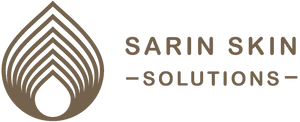Acne Scarring
At Sarin Skin, our dermatologists specialize in the treatment of acne scarring using a combination of multiple modalities including lasers, IPL, chemical peels, filler injections, microneedling, radiofrequency and surgery.
Call our office today to schedule a consultation with our dermatologist – 09599599886, 011-45562916
The optimal treatment approach for acne scarring depends upon the type of scarring and is often a combination of several techniques. The following treatments can be used alone or in combination to lessen the appearance of acne scarring:
Skin Tightening & Body Fat Reduction

Chemical Peels:
Salicylic acid treats not only the ruddy, brown discoloration associated with PIH but also penetrates into the oil glands to treat active acne and to prevent new acne from forming. Trichloroacetic acid (TCA) can also be administered carefully in high concentrations to treat individual icepick scars.
Subscision:
This technique involves inserting a needle with a tiny blade at the end of it into areas of depressed acne scars to release the underlying scar tissue from “tethering down” boxcar and rolling acne scars. Subscission is often performed during the same session as micro-needling, radiofrequency + micro-needling, and/or fractionated CO2 laser to achieve optimal improvement.
Microneedling and Radiofrequency Microneedling:
Microneedling causes “controlled wounding” of the skin. This involves using thin needles to mechanically remodel the skin, stimulating increased production of hyaluronic acid, collagen and elastin. The final effect is improved texture and tone of the skin with an overall decrease in pore size. Adding radiofrequency to microneedling amplifies production and remodeling of collagen and elastin, which results in even more skin tightening.
Lasers Treatments:
CO2 laser resurfacing: this procedure creates tiny, microcolumns of destruction in the skin. The surrounding areas of spared skin are stimulated to fill in the columns, ultimately yielding fresh, healthier skin. The CO2 laser is ablative, meaning it selectively removes and resurfaces portions of the skin. It is the “gold-standard” for treating moderate to severe acne scarring and typically involves approximately a week of downtime.
Fillers:
Small droplets of strategically-injected filler can be used to raise depressed acne scars.
Injection Treatment:
Thickened, hard acne scars are referred to hypertrophic scars and keloids. These are best treated by focal injections of steroids and/or 5-fluoruracil. Injection therapy softens and flattens out these thicker acne scars.
Surgical Excision:
This technique involves using a circular blade to remove icepick scars (tiny, but deep scars) that are often resistant to other treatments. After the depressed scar is popped out, a tiny stitch is placed in the area and is subsequently removed after a week. In summary, we use the most technologically-advanced methods on the market to optimally treat various types of acne scarring. And, often a combination of the above treatments is ideal to achieve maximal improvement in the appearance of acne scars. Each treatment regimen is formulated specifically for you and the type(s) of acne scarring that you have.
- Choosing a selection results in a full page refresh.






